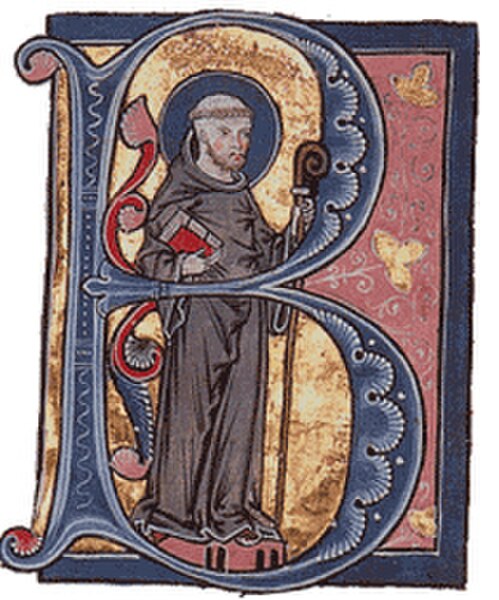Valle Crucis Abbey is a Cistercian abbey located in Llantysilio in Denbighshire, north Wales. More formally the Abbey Church of the Blessed Virgin Mary, Valle Crucis it is known in Welsh both as Abaty Glyn Egwestl and Abaty Glyn y Groes.
The abbey was built in 1201 by Madog ap Gruffydd Maelor, Prince of Powys Fadog. Valle Crucis was dissolved in 1537 during the Dissolution of the Monasteries, and subsequently fell into serious disrepair. The building is now a ruin, though large parts of the original structure still survive. Valle Crucis Abbey is now under the care of Cadw. The abbey received 5,690 visitors in 2018.
Valle Crucis Abbey
1875 drawing of the abbey by Alfred Rimmer
The chapterhouse in the east range; compare to the drawing by Rimmer over a century earlier
Engraving taken from Hone's Table-book, showing Pillar of Eliseg with the west front wall of Crucis Abbey in the background
The Cistercians, officially the Order of Cistercians, are a Catholic religious order of monks and nuns that branched off from the Benedictines and follow the Rule of Saint Benedict, as well as the contributions of the highly-influential Bernard of Clairvaux, known as the Latin Rule. They are also known as Bernardines, after Saint Bernard himself, or as White Monks, in reference to the colour of the "cuculla" or cowl worn by the Cistercians over their habits, as opposed to the black cowl worn by Benedictines.
St. Bernard of Clairvaux, one of the most influential early Cistercians, seen here depicted in a historiated initial
An illumination of Stephen Harding (right) presenting a model of his church to the Blessed Virgin Mary (Municipal Library, Dijon). Cîteaux, c. 1125. At this period Cistercian illumination was the most advanced in France, but within 25 years it was abandoned altogether under the influence of Bernard of Clairvaux.
Tintern Abbey, founded in 1131
The ruins of Melrose Abbey, mother house of the Cistercians in Scotland








